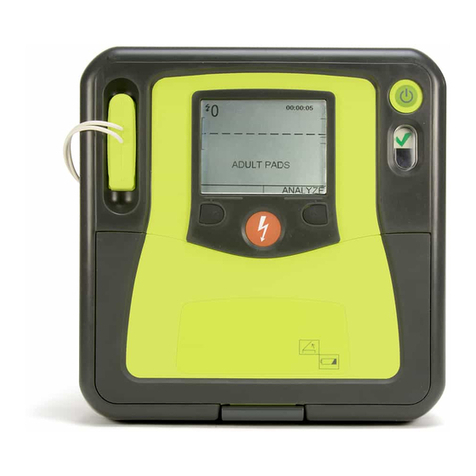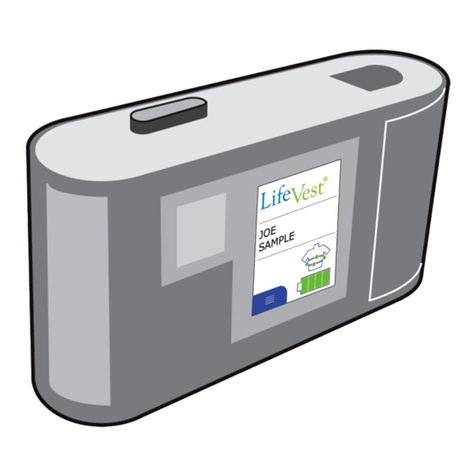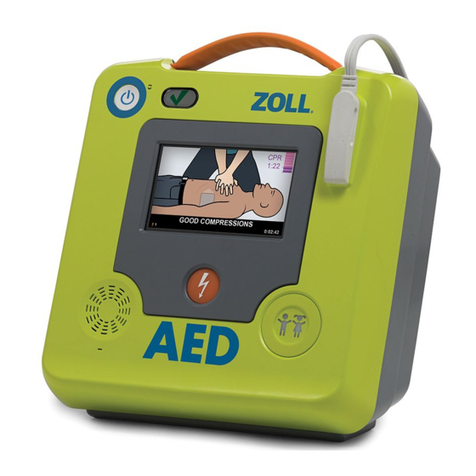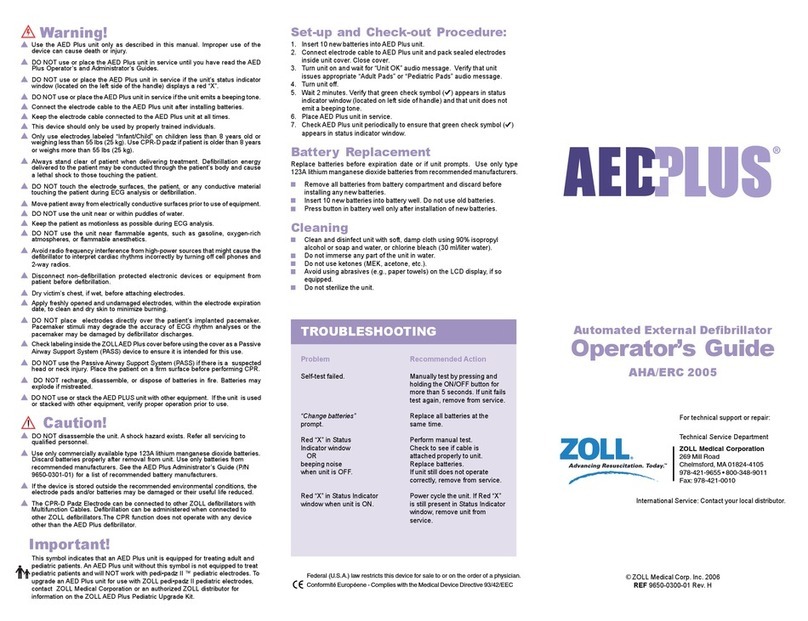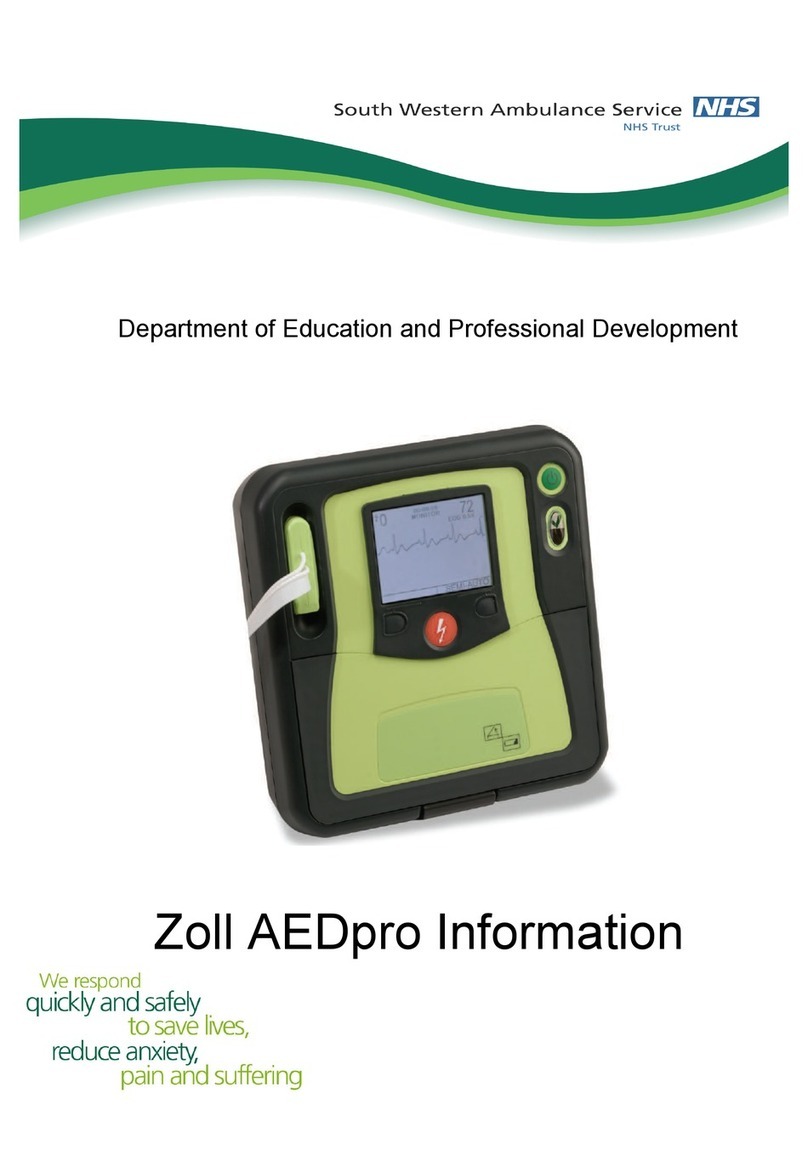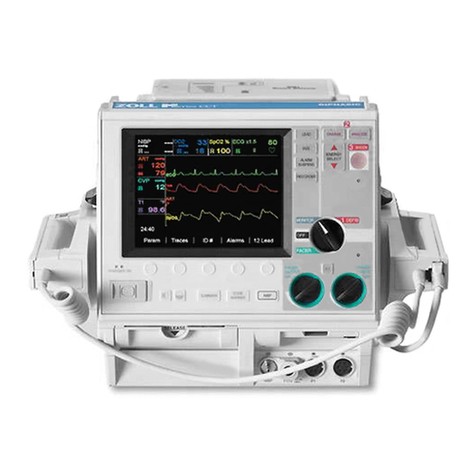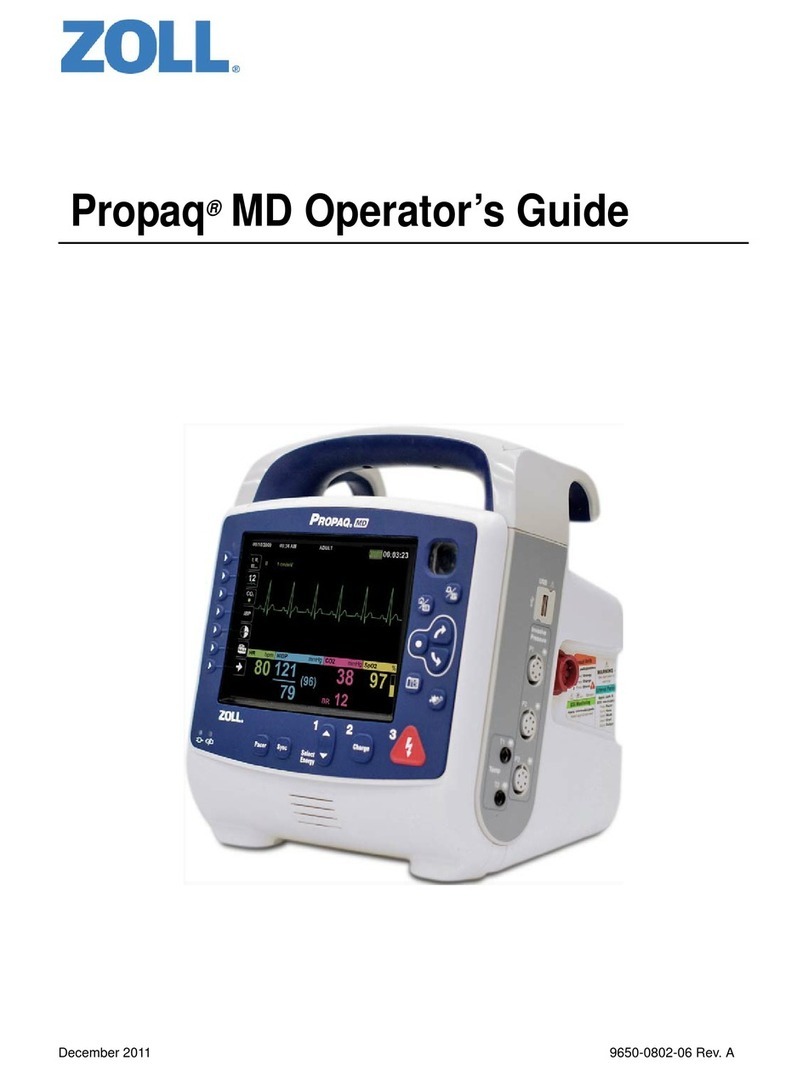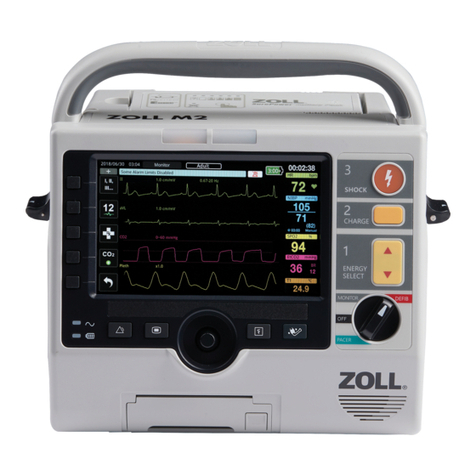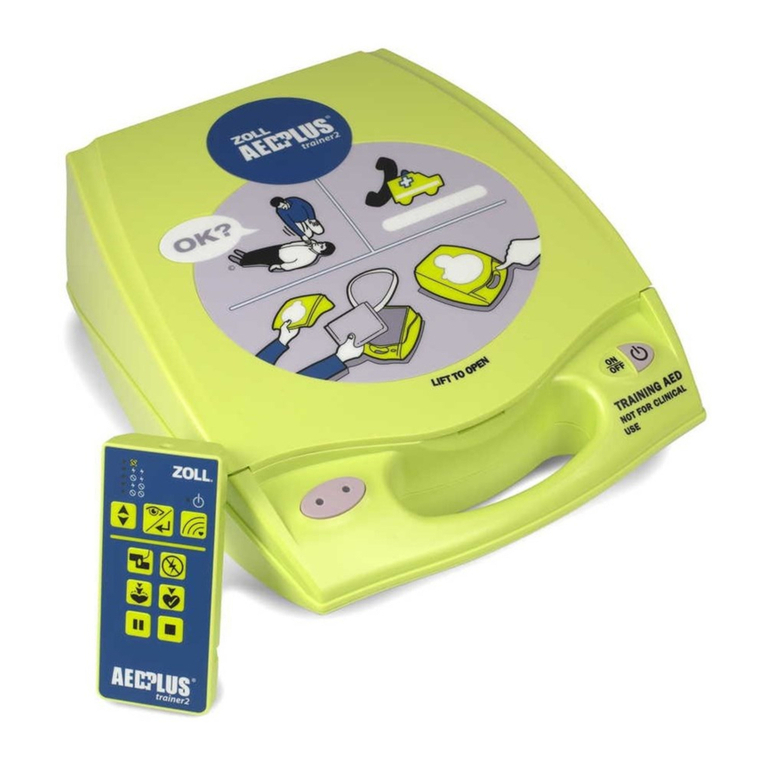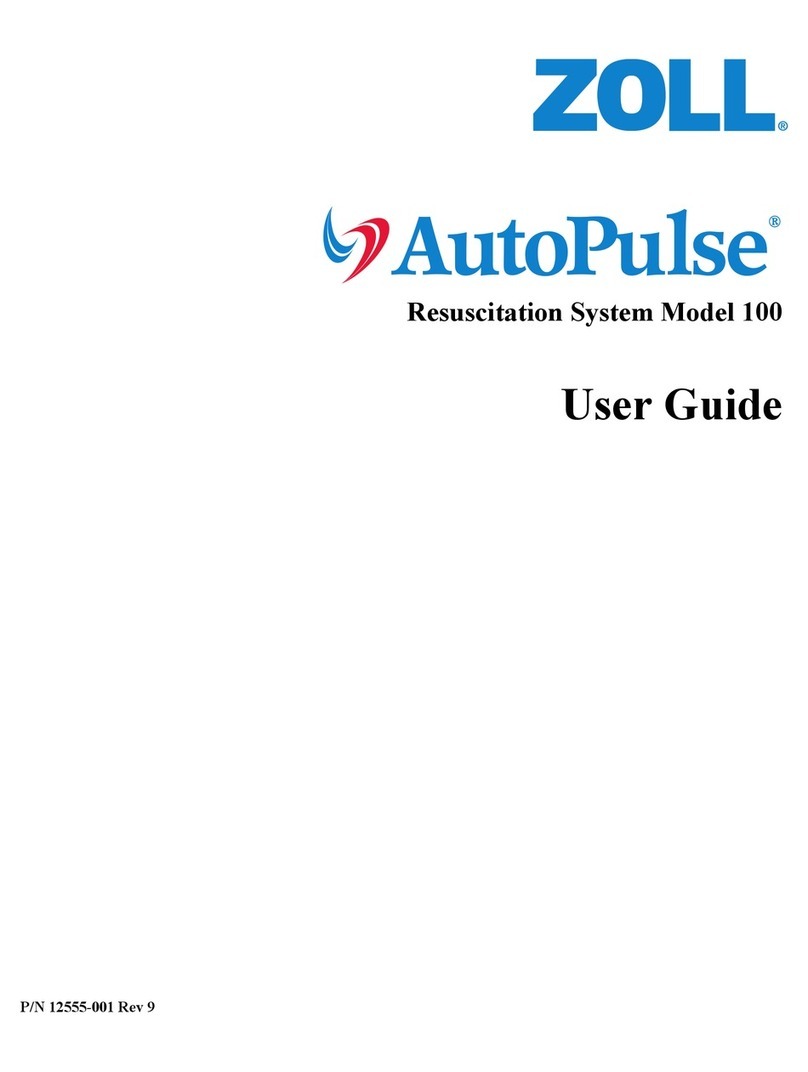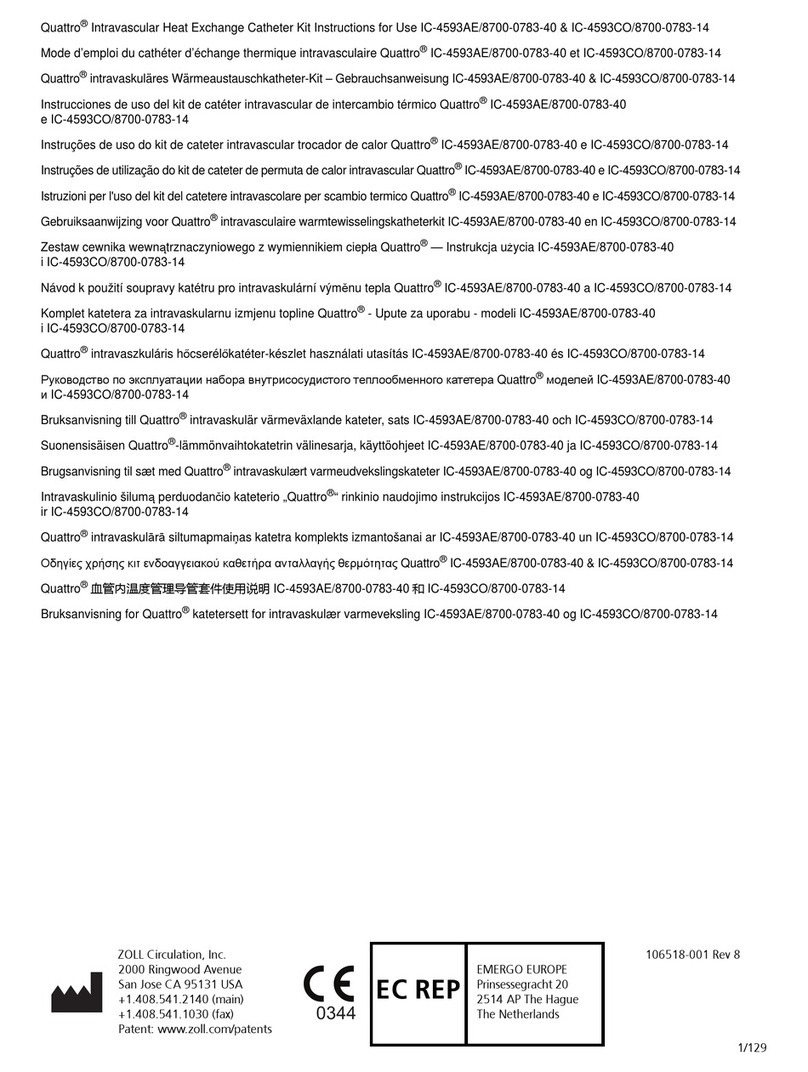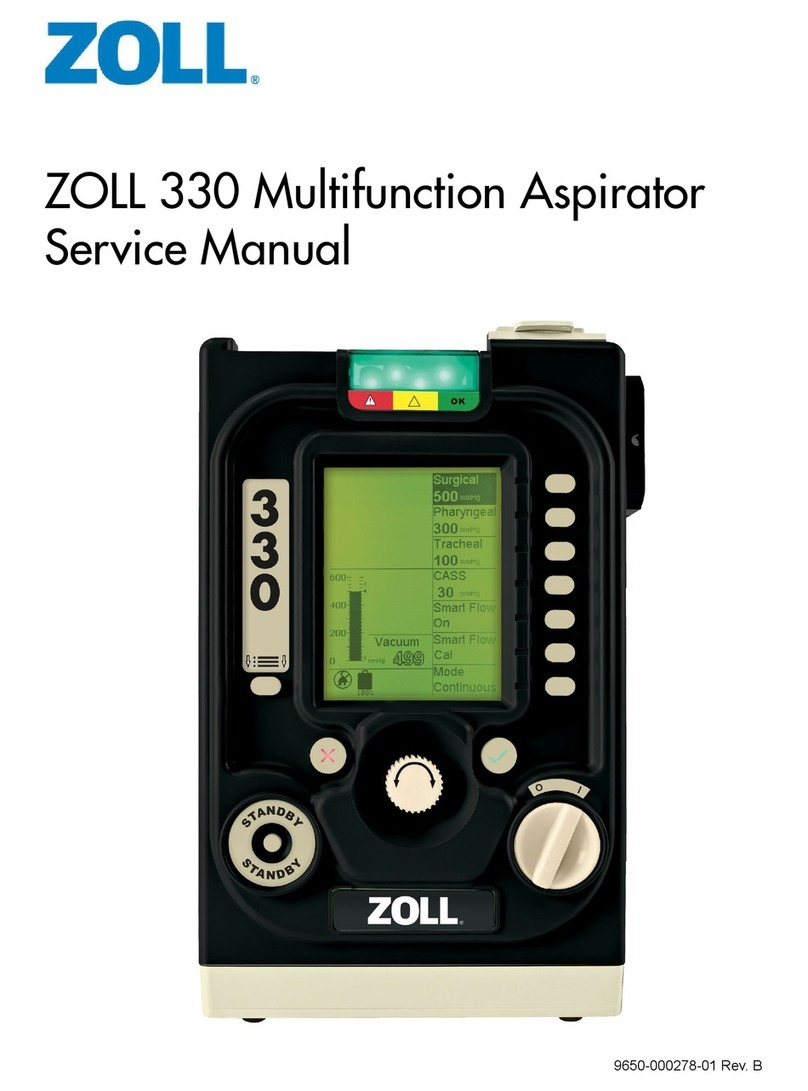
Connecting your ZOLL AED 3 to a WiFi Network for Data Transmission
ZOLL AED 3®WiFi
Setup Guide
Confirm the following information with your IT team:
•Type and frequency of your WiFi network
ºThe ZOLL AED 3 device supports these WiFi
authentication protocols: PSK, PEAP, or TLS. It is
compatible with both 2.4 and 5 GHz frequencies.
º Note: Due to cyber security concerns, the ZOLL
AED 3 device will not connect to open networks
(no password required) or those that require active
confirmation.
•MAC device addresses:
ºIf your facility tracks the MAC address of connected
devices, you can find these on the ZOLL AED 3
device while in non-rescue mode by selecting the “(i)”
button in the user interface (UI). Each MAC address is
unique to the device/serial number.
•The ZOLL AED 3 defibrillator can connect to different
hosted/in-premise network accounts for Device History
(device self-test transmission) or Clinical Archives (clinical
event files).
ºDevice History — configuration settings for
PlusTrac™and Defibrillator Dashboard™
ºClinical Archives — configuration settings
for ZOLL Online RescueNet®CaseReview or
in-premise CaseReview.
Connection Setup Tips:
•For PSK networks, use the Quick Setup icon for easy
connection. Simply use the WiFi search icon to
find your network (SSID). Select your network
and enter the password (Pre-Shared Key).
•For all other network types, ZOLL®recommends you use the
IT Setup softkey. When configuring your device, be sure to
have a member of your IT team present for assistance.
•For Device History/Self-test transmission, all ZOLL
AED 3 devices are preprogrammed to connect to the ZOLL
Online and PlusTrac Device Management server. You don’t
need to change the server settings unless you are connecting
to Defibrillator Dashboard.
•Once you configure your first ZOLL AED 3 device, use the
TEST WIFI button to confirm proper configuration.
ºTest WiFi will run Network Test Connection, send a self-test
file (DSF) to confirm operation, and perform an internal
clock synchronization.
ºIf you receive an error notification, please refer to the ZOLL
AED 3 WiFi Spec Sheet for a description of the error.
ºOnce configuration has been confirmed, export the device
configuration to a USB and use that file to import the WiFi
configuration into all other AEDs.
•For the TLS method of WiFi authentication, you’ll need to
obtain both a root certificate and a client certificate from
your IT department. ZOLL recommends using the .pem (b64-
encoded) format prior to deployment.
Every ZOLL AED 3®defibrillator can be connected to a local WiFi network to aid in device management
and rapid clinical event data transmission. Prior to connecting your ZOLL AED 3 to a local network, we
recommend that you follow these important steps.


